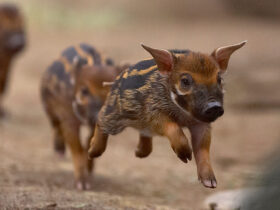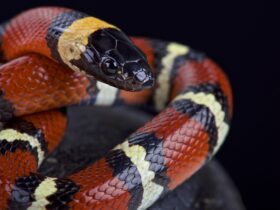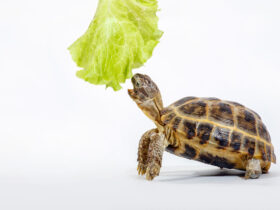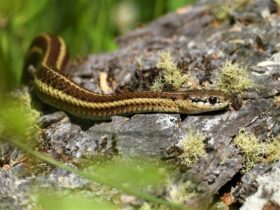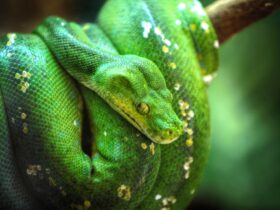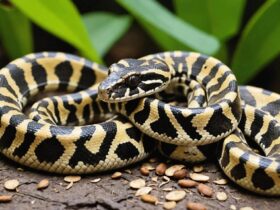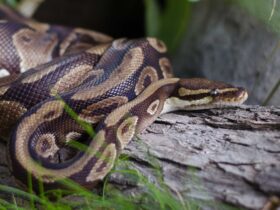Thinking about getting a king snake? They’re pretty cool reptiles to have around. Not only are they known for their vibrant colors and patterns, but they’re also generally easy to care for. Whether you’re new to the snake world or have been a fan for years, king snakes can be a great addition to your home. But like any pet, they have their own needs and quirks, so it’s good to know what you’re getting into. Let’s dive into some key takeaways about king snake care.
Understanding King Snake Behavior
Temperament and Interaction
King snakes are fascinating creatures with a wide range of temperaments. Generally, they are known for their calm nature, making them a popular choice among reptile enthusiasts. However, individual personalities can vary. Some king snakes may be more reserved, while others might be quite curious and active. Recognizing signs of comfort in snakes is essential for ensuring their well-being. A relaxed snake exhibits calm movements, steady breathing, and unhurried tongue flicking. Regular feeding and drinking habits, along with tolerance for gentle handling, indicate ease. Understanding natural behaviors, such as nocturnal activity and the use of hiding spots, further helps in identifying stress levels. Observing these behaviors ensures a healthy, stress-free environment for your snake.
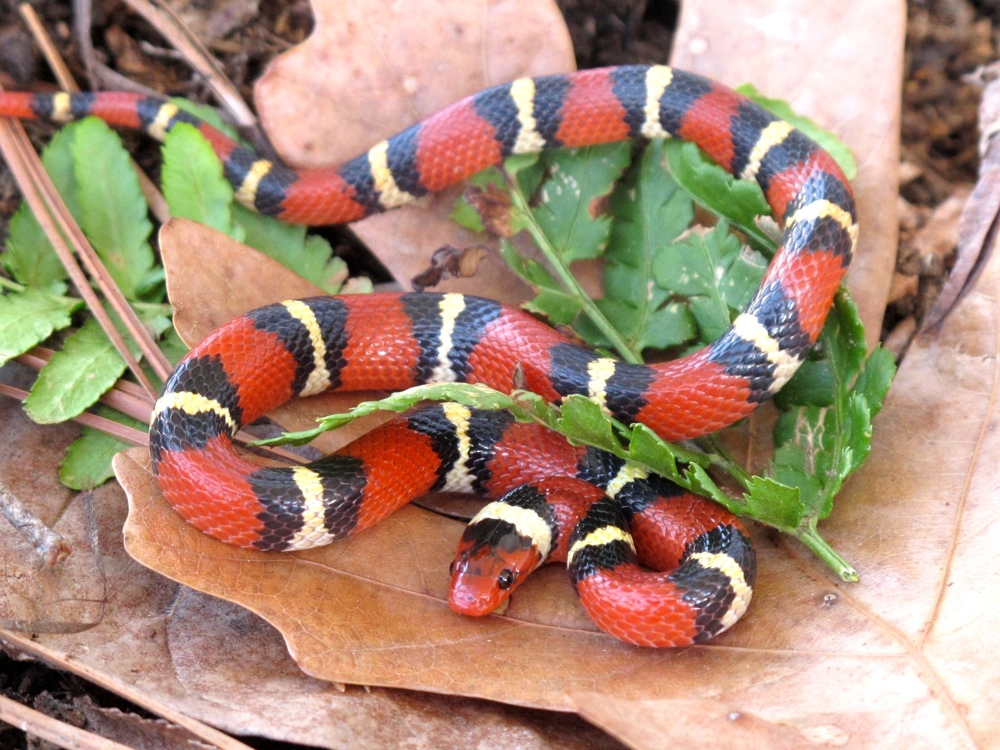
Handling Techniques
When it comes to handling your king snake, patience is key. It’s important to let your snake settle into its new environment before frequent handling. Start with short sessions, allowing your snake to become accustomed to your presence. Avoid sudden movements and always support the snake’s body fully. Letting the snake crawl onto your hand rather than grabbing it will help build trust. Remember, it’s not uncommon for a snake to be defensive initially, especially if it feels threatened. Over time, with consistent and gentle handling, your snake will likely become more comfortable and trusting.
Common Behavioral Traits
King snakes are known for their adaptability and resilience. They thrive in various environments, showcasing their ability to climb and swim when necessary. In the wild, they are often nocturnal, preferring to hunt and explore during the night. In captivity, these snakes may exhibit similar behaviors, so providing an environment that mimics their natural habitat is beneficial. It’s also important to note their defensive behaviors, such as “musking,” where they release a foul smell when threatened. Understanding these common traits can help you create a more harmonious living situation for your king snake, ensuring it remains healthy and stress-free.
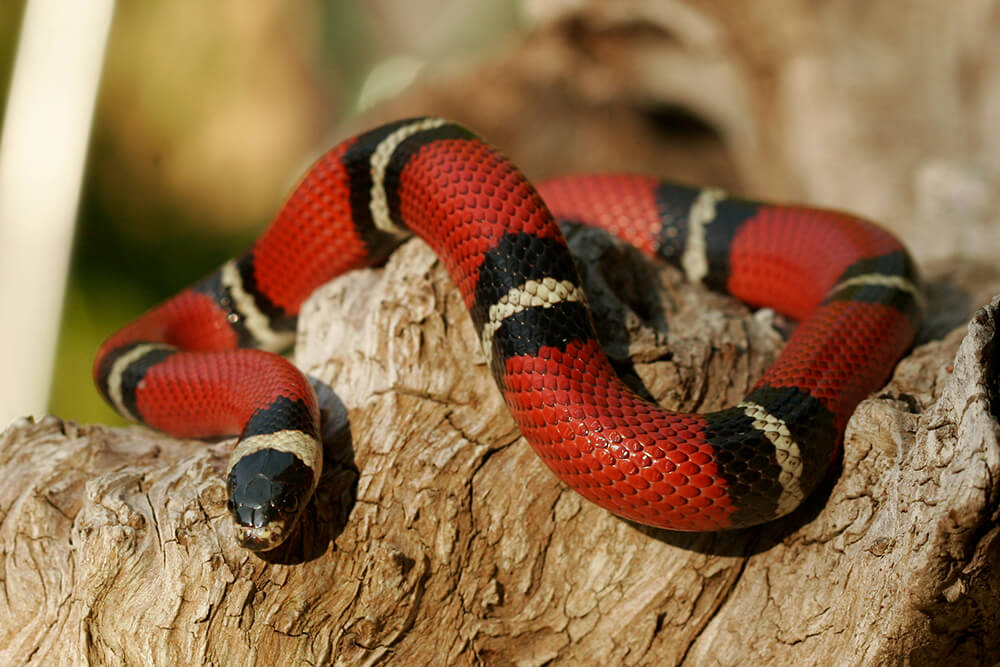
Creating the Perfect King Snake Habitat
Choosing the Right Enclosure
When it comes to setting up a home for your king snake, size matters. A mature king snake will thrive in an enclosure that’s at least 20 gallons, but honestly, the bigger, the better. Snakes love to explore, and they’ll use every inch of space you give them. Make sure the enclosure has a secure lid because these little escape artists are quite the climbers. If you’re looking for a more natural setup, consider a glass terrarium with plenty of ventilation.
Temperature and Humidity Control
Keeping your king snake comfortable means getting the temperature and humidity just right. You’ll need a couple of heat bulbs to create a warm basking area, ideally around 85°F. Use a temperature gun to check it. Humidity should be between 40-60%, which you can manage with a digital hygrometer. Mist the enclosure as needed, and don’t forget to provide a humid hide with some moistened sphagnum moss.
Decor and Enrichment
Decor isn’t just for looks; it’s crucial for your snake’s mental and physical health. Add branches, vines, and rocks for climbing and exploring. Hiding spots are a must, too—your snake will appreciate a cozy hideaway. Try using cork rounds or flats, and maybe some live or artificial plants. Not only do these items make the enclosure look great, but they also encourage natural behaviors and help keep your snake active.
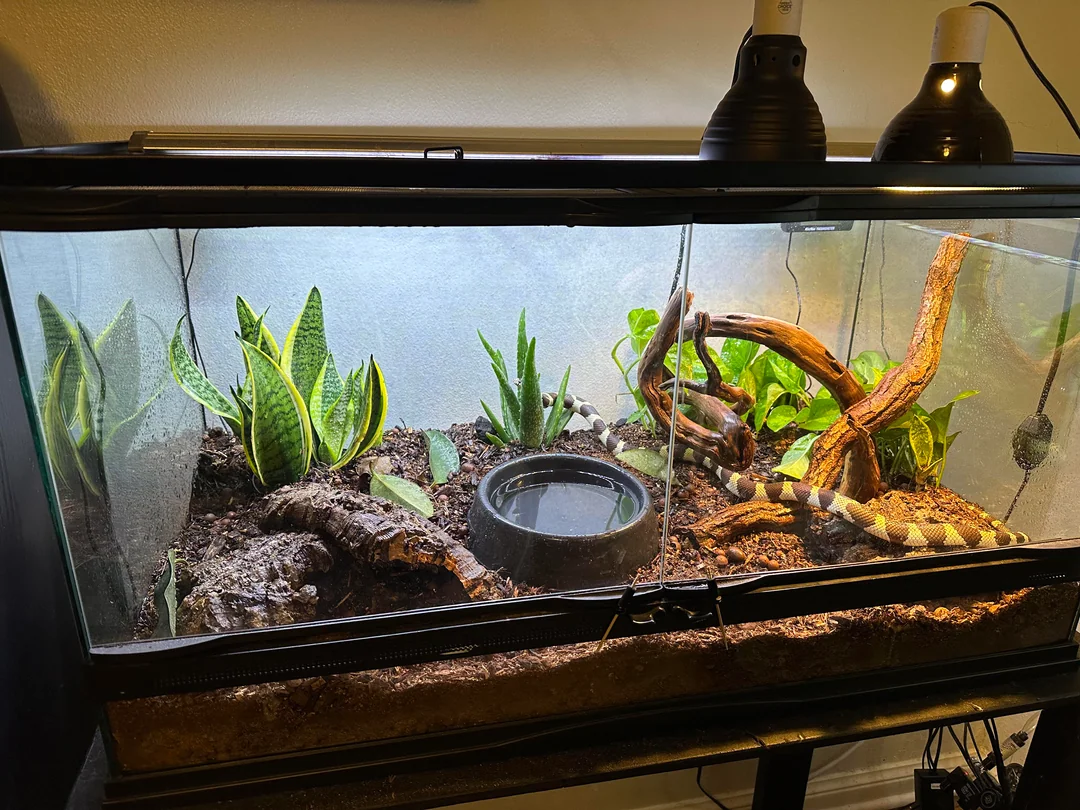
Feeding Your King Snake
Dietary Needs and Variety
Feeding your king snake a varied diet is super important. They are carnivores, so they thrive on a diet of whole prey. While mice are the go-to, it’s beneficial to mix it up with other prey like young rats, birds, and even other reptiles. A good rule of thumb is to ensure the prey size is no larger than 1.5 times the width of your snake or about 10% of its body weight. If your snake seems to be gaining too much weight, consider reducing the size or frequency of feedings.
Feeding Schedule and Techniques
King snakes have different feeding needs based on their age. Hatchlings usually eat every 5-7 days. Juveniles can go 7-10 days between meals, while adults may only need to eat every 10-14 days. Frozen-thawed prey is generally safer and more humane than live prey. Use feeding tongs to offer the prey, minimizing the risk of a bite.
Supplements and Nutrition
While king snakes can generally do well without supplements, occasionally dusting their prey with a calcium and multivitamin mix can help prevent nutritional deficiencies. It’s a simple step that can contribute to your snake’s long-term health. Always ensure they have access to fresh water, as hydration is key to their well-being.
Maintaining a balanced diet for your king snake isn’t just about feeding them the right prey—it’s about feeding pet snakes with care and attention to detail. This ensures a healthy and thriving pet.
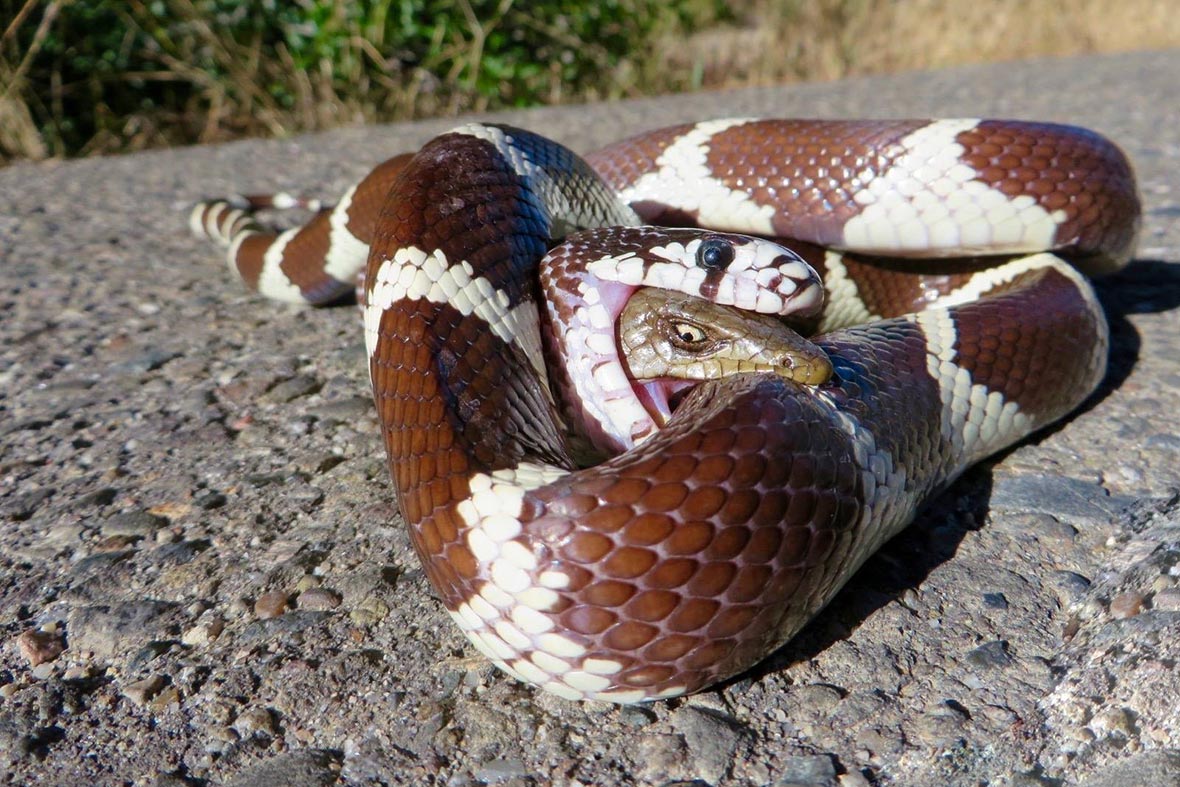
Health and Wellness of King Snakes
Keeping your king snake healthy is a rewarding responsibility, and understanding potential issues is key to their well-being.
Common Health Issues
King snakes, like all reptiles, can face a variety of health challenges. Respiratory infections are common, often caused by environments that are too cold or damp. Symptoms include wheezing and open-mouth breathing. If your snake shows these signs, a visit to the vet is essential.
Mites are another concern. These tiny pests can cause irritation and anemia. Look for signs like excessive soaking or visible specks on the skin. Regular cleaning of the enclosure helps prevent infestations.
Signs of a Healthy King Snake
A healthy king snake is active and alert, with clear eyes and smooth skin. They should have a regular appetite and shed their skin in one complete piece. Bright colors and a firm body are also good indicators of health.
Preventative Care Tips
- Regular Vet Visits: Schedule annual check-ups with a reptile vet.
- Clean Environment: Keep the enclosure clean to prevent disease.
- Proper Diet: Ensure they have a balanced diet. For more on proper nutrition, consult a reptile nutrition guide.
“A king snake’s health is a reflection of its environment and care. Consistent monitoring and proactive measures can prevent most health issues.”

Breeding King Snakes
Breeding Preparation and Conditions
To get started with breeding king snakes, you need to make sure both the male and female are healthy and mature enough. Typically, they reach sexual maturity around two to three years old. Ensure your snakes are well-fed and in good health before considering breeding. It’s also important to mimic their natural environment, which includes adjusting temperatures and light cycles to simulate seasonal changes. Many breeders cool their snakes for a few months before the breeding season to encourage successful mating.
Egg Incubation and Hatching
Once your female king snake lays her eggs, usually between two and twelve per clutch, you’ll need to incubate them. The ideal temperature for incubation is between 82°F and 85°F. Humidity should be maintained at around 70-80%. Most eggs will hatch in about 60 days, but this can vary slightly depending on the exact conditions. A simple incubator can be made using a plastic container with a lid, filled with a moist substrate like vermiculite or perlite.
Caring for Hatchlings
After hatching, king snake hatchlings are pretty much miniature versions of their parents. They are independent from birth but require careful monitoring. Provide them with a small, secure enclosure with hiding spots and a shallow water dish. Hatchlings typically eat small pinky mice and should be fed every 5-7 days. Keep an eye on their growth and health, ensuring they shed properly and have access to fresh water.
Breeding king snakes can be a rewarding experience, but it requires dedication and attention to detail. With the proper setup and care, you’ll find it a fascinating way to learn more about these incredible reptiles.
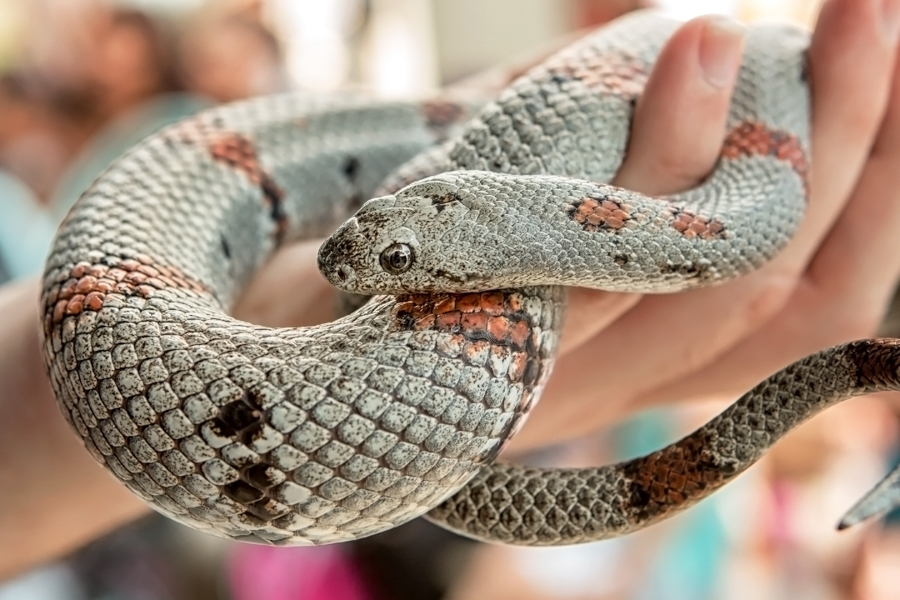
King Snake Species and Varieties
Popular King Snake Species
King snakes are a diverse group of reptiles with around 45 recognized subspecies. Among these, some of the most popular are:
- California King Snake (Lampropeltis getula californiae): Known for its striking black and white banding, this species is a favorite among hobbyists. They are relatively easy to care for and adapt well to captivity.
- Mexican Black King Snake (Lampropeltis getula nigrita): These snakes are entirely black and are admired for their sleek appearance. They are known for their calm nature, making them great for beginners.
- Eastern King Snake (Lampropeltis getula getula): This species is widespread across the eastern United States and is recognized by its chain-like pattern. They are hardy and can thrive in various environments.
Unique Color Morphs
King snakes have a fascinating array of color morphs, which makes them particularly appealing to reptile enthusiasts. Some notable morphs include:
- Albino Morphs: These lack the usual dark pigments, resulting in bright yellow and white patterns.
- Banana Morphs: Characterized by their vibrant yellow coloration with black speckles, resembling a banana.
- Lavender Morphs: These exhibit a pale lavender hue with contrasting patterns, giving them a unique appearance.
Choosing the Right King Snake for You
When selecting a king snake, consider the following factors:
- Temperament: Some species are more docile than others, which might be important if you plan to handle your snake frequently.
- Size: King snakes can vary in size, so ensure you have adequate space for their enclosure.
- Care Requirements: Different species may have specific needs regarding temperature, humidity, and diet.
King snakes are an excellent choice for both novice and experienced reptile keepers. With their manageable size, diverse appearances, and relatively simple care requirements, they make fascinating pets that can live for over 20 years with proper care.
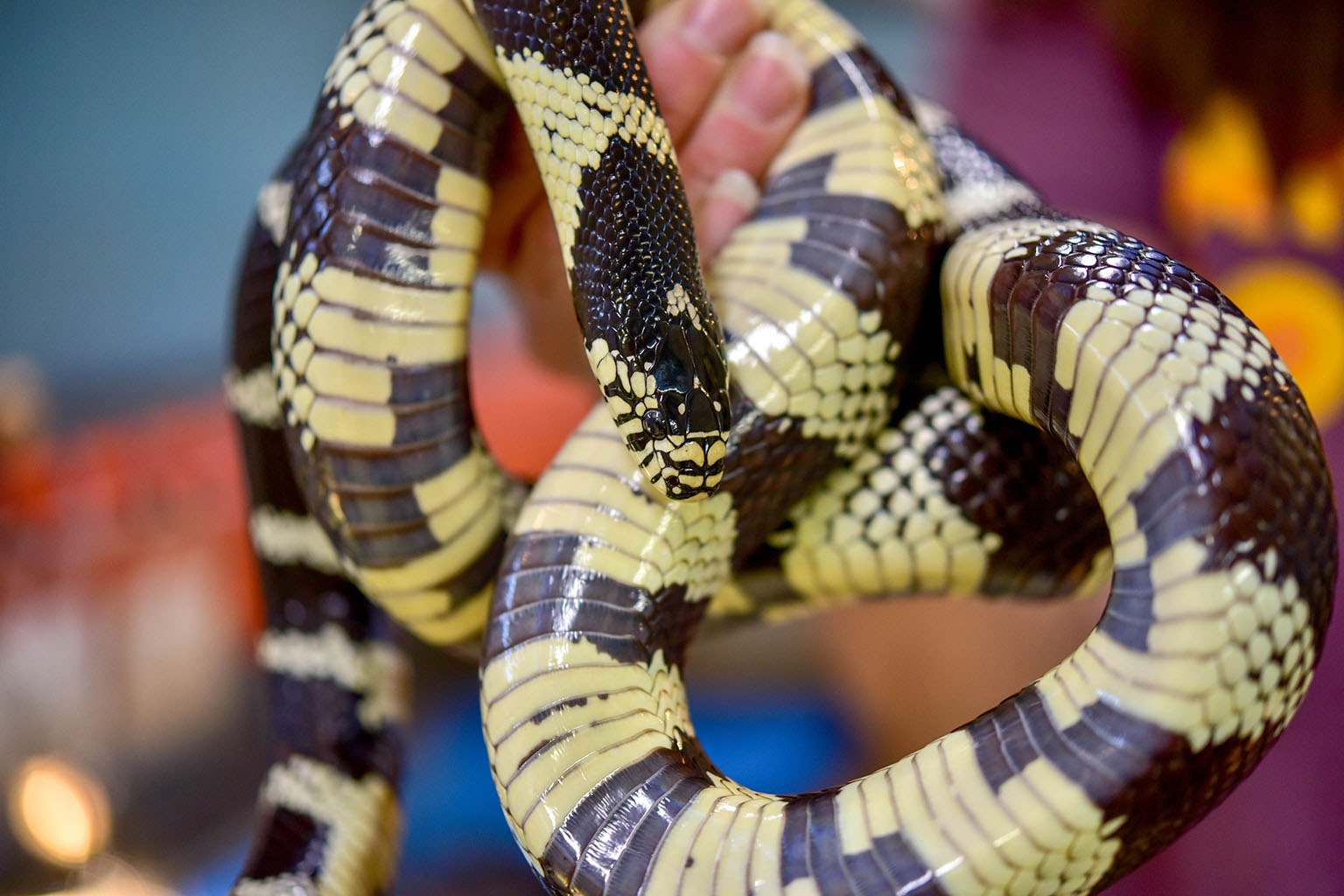
Handling and Interaction with King Snakes
Initial Handling Tips
When you first bring your king snake home, give it some time to get used to its new surroundings. Typically, a settling period of about two weeks is recommended. During this time, avoid handling the snake until it has started eating regularly. Once your snake is ready, begin with short handling sessions, no longer than five minutes. Let the snake crawl onto your hand rather than grabbing it. This approach helps build trust and reduces stress.
Building Trust with Your Snake
Building a relationship with your king snake is a gradual process. Start by handling your snake gently and regularly, at least once a week but no more than once a day. Support its body fully and avoid sudden movements. Patience is key here. With time, your snake will become more accustomed to your presence, leading to a more trusting interaction.
Safe Handling Practices
Safe handling is crucial for both you and your snake. Always lift your snake from below and support its entire body. Avoid handling your snake immediately after it has eaten or when it is shedding, as these are times when it may feel vulnerable. If your snake shows signs of stress, such as tail shaking or defensive posturing, give it some space and try again later. Regular, calm handling can help your snake feel more secure and less likely to exhibit stress behaviors.
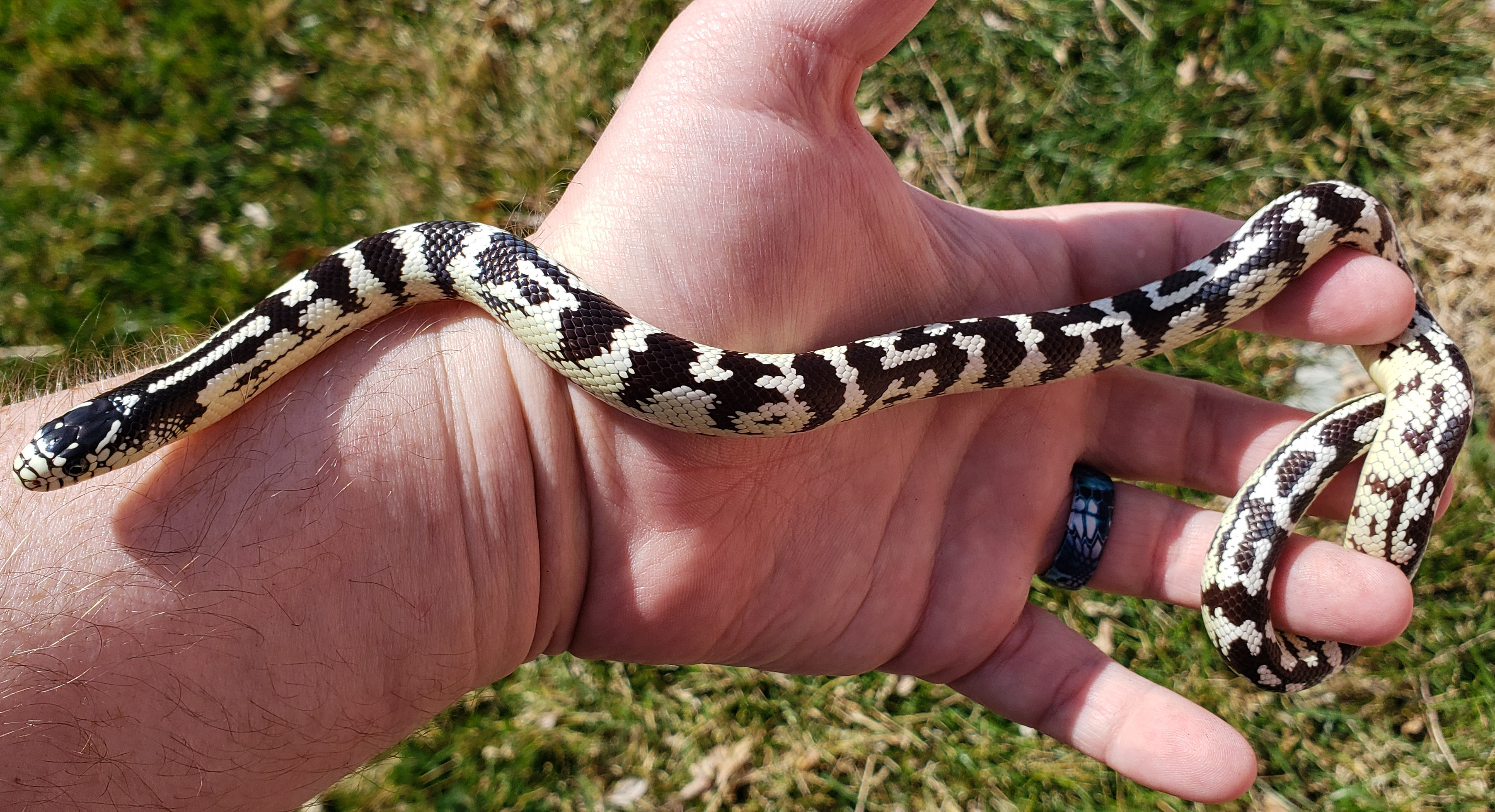
King Snake Lifespan and Growth
Growth Stages and Development
King snakes, like many reptiles, go through distinct stages of growth. Hatchlings are tiny, measuring around 8 inches. As they grow, they shed their skin, a process called ecdysis, which occurs more frequently in younger snakes. Juveniles rapidly gain length, and by the time they’re adults, they can reach anywhere from 3 to 6 feet, depending on the subspecies. Growth rates can vary, influenced by factors like diet and environment.
Factors Affecting Lifespan
The lifespan of a king snake can range from 12 to over 20 years, especially in captivity where conditions are controlled. Proper care is crucial. Factors such as diet, habitat, and health care significantly impact longevity. In the wild, they face more threats, which can reduce their lifespan. Captive snakes, when given a balanced diet and a stress-free environment, tend to live longer.
Caring for Aging King Snakes
As king snakes age, their care needs change. Older snakes might not be as active and can have different dietary needs. Regular health check-ups become more important to catch any age-related issues early. Providing a comfortable and safe habitat with easy access to water and food can help them in their later years. It’s essential to monitor their weight and adjust feeding as necessary to prevent obesity or malnutrition.
Aging king snakes, with their slower pace and greater need for comfort, remind us of the importance of attentive care throughout their lives.
Owning a pet snake can be rewarding, but it’s important to avoid common mistakes like improper diet. With the right care, your king snake can thrive for decades, offering a fulfilling companionship.
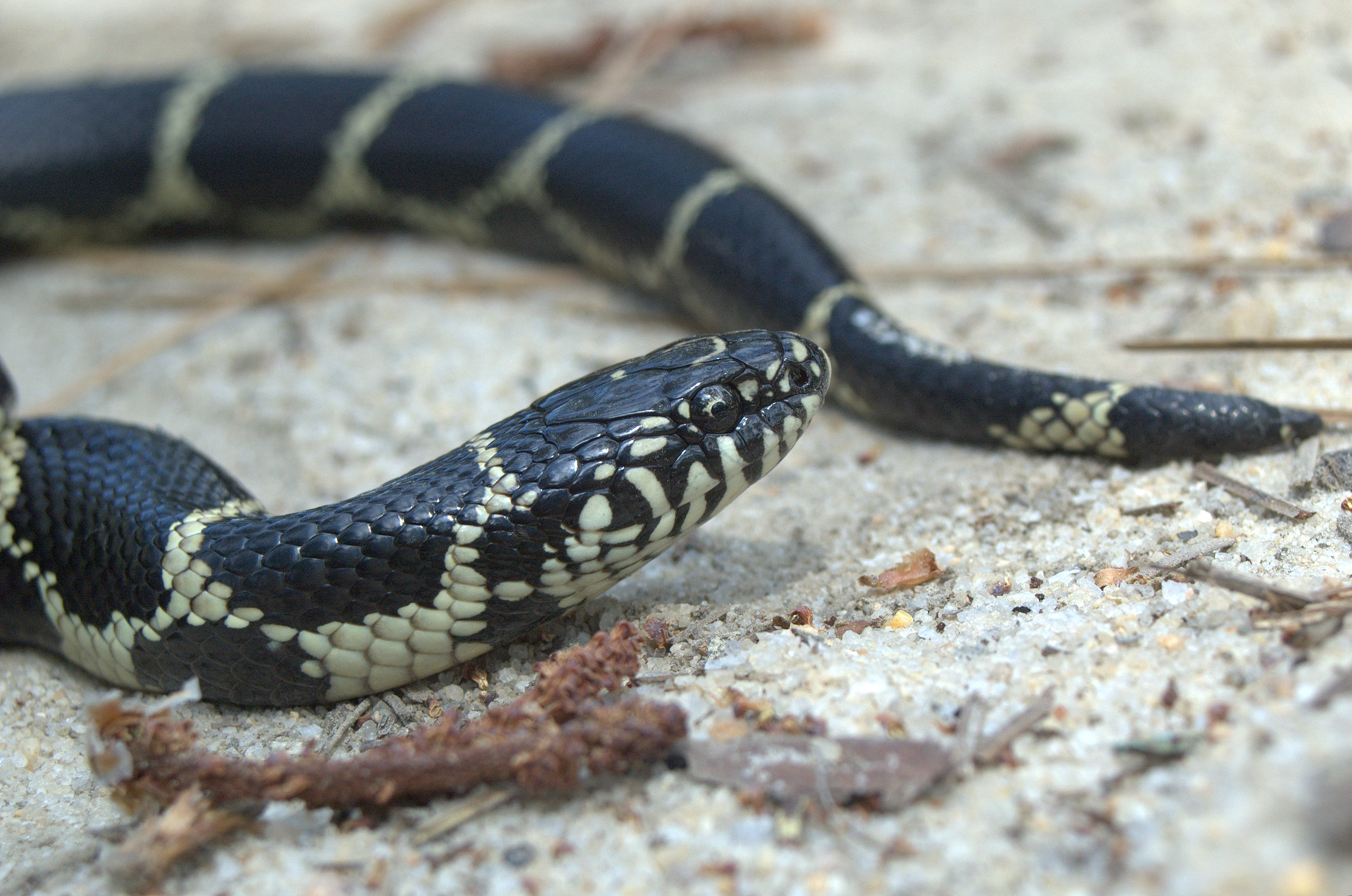
Conclusion
So, there you have it, folks. King snakes are pretty awesome pets if you ask me. They’re not too hard to take care of, and they look super cool with all those colors. Just remember, like any pet, they need the right setup and some love. Make sure their home is comfy, feed them right, and handle them gently. If you do all that, you’ll have a happy snake buddy for years. Whether you’re a newbie or a seasoned snake owner, king snakes can be a great addition to your family. So, go ahead, give it a shot, and enjoy the slithery company!
Frequently Asked Questions
How often should I feed my king snake?
Young king snakes should be fed every 5-7 days, while adults can be fed every 10-14 days. It’s important to adjust the feeding schedule based on your snake’s size and activity level.
What is the ideal temperature for a king snake’s habitat?
A king snake’s habitat should have a temperature range of 75-85°F, with a warmer spot available for basking. At night, temperatures can drop slightly, but should not go below 70°F.
How can I tell if my king snake is healthy?
A healthy king snake will have clear eyes, a smooth and shiny skin, and be active. Watch for signs of illness like wheezing, lethargy, or unusual spots on the skin.
What should I do if my king snake is not eating?
If your king snake refuses food, ensure the habitat conditions are correct. Try offering different types of prey or consult a vet if the snake continues to not eat.
How do I handle my king snake safely?
Start by letting your snake get used to your presence. Handle it gently, supporting its body, and avoid sudden movements. Never grab it by the tail.
Can king snakes live together in the same enclosure?
It’s generally not recommended to house king snakes together as they can be territorial and may harm each other. It’s best to keep them in separate enclosures.

